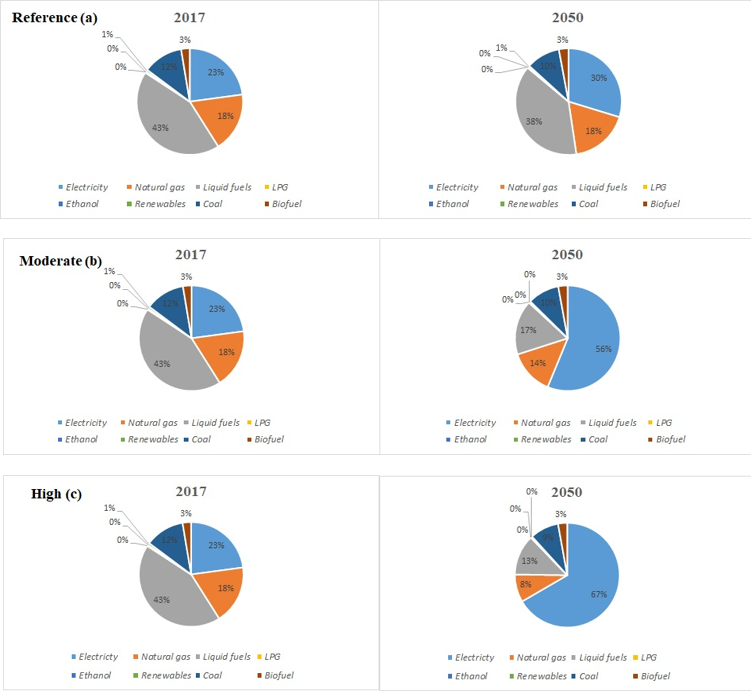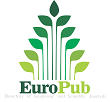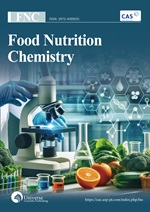Projections of global energy transition models in the wake of industrial revolution and climate change policies
DOI:
https://doi.org/10.18686/cest273Keywords:
Industry 4.0; climate change policies; electrification; energy demand; LEAP; technology diffusionAbstract
This study evaluates the potential impacts of Industry 4.0 on energy demand, CO2 emissions, and climate change up to 2050 and provides an analytical basis for developing climate policies. Using the Low-Emissions Analysis Platform, the paper calculated projected technology diffusions under reference, moderate-adoption, and high-adoption scenarios. The findings reveal that adopting Industry 4.0 can significantly increase electricity demand. To address these challenges, the study recommends that policymakers adopt uniform carbon pricing policies, focus on decarbonizing energy supply and demand, and develop infrastructure for road transportation electrification. Policymakers are also urged to transition to carbon-free electricity generation technologies and implement pricing policies covering all sectors’ emission intensities to reduce total emissions effectively. Finally, the study highlights the importance of conducting holistic evaluations through life-cycle analyses. It suggests future research areas, including regional variations, energy demand shifts between sectors, energy cost evaluation, and conducting life-cycle analyses for electric vehicles and renewable energy technologies.

Downloads
Published
How to Cite
Issue
Section
License
Copyright (c) 2025 Author(s)

This work is licensed under a Creative Commons Attribution 4.0 International License.
References
1. Oreskes N. The Scientific Consensus on Climate Change: How Do We Know We’re Not Wrong? In: Lloyd EA, Winsberg E (editors). Climate Modelling: Philosophical and Conceptual Issues. Springer International Publishing; 2018. DOI: https://doi.org/10.1007/978-3-319-65058-6_2
2. Favi C, Marconi M, Mandolini M, Germani M. Sustainable life cycle and energy management of discrete manufacturing plants in the industry 4.0 framework. Applied Energy. 2022; 312: 118671. doi: 10.1016/j.apenergy.2022.118671 DOI: https://doi.org/10.1016/j.apenergy.2022.118671
3. Clark PU, Shakun JD, Marcott SA, et al. Consequences of twenty-first-century policy for multi-millennial climate and sea-level change. Nature Climate Change. 2016; 6(4): 360–369. doi: 10.1038/nclimate2923 DOI: https://doi.org/10.1038/nclimate2923
4. Kasa S. Industrial Revolutions and Environmental Problems. In: Ostreng W (editor). Confluence Interdisciplinary Communications 2007/2008. Centre for Advanced Study; 2009.
5. Crutzen PJ. The Anthropocene. In: Ehlers E, Krafft T (editors). Earth System Science in the Anthropocene. Springer Berlin Heidelberg; 2006.
6. Vitousek PM, Mooney HA, Lubchenco J, Melillo JM. Human Domination of Earth’s Ecosystems. Science. 1997; 277(5325): 494–499. doi: 10.1126/science.277.5325.494 DOI: https://doi.org/10.1126/science.277.5325.494
7. Russell AL. Telecommunications Standards in the Second and Third Industrial Revolutions. Journal of the Communications Network. 2006; 5(1): 100–106.
8. Mughees N, Jaffery MH, Mughees A, et al. Reinforcement learning-based composite differential evolution for integrated demand response scheme in industrial microgrids. Applied Energy. 2023; 342: 121150. doi: 10.1016/j.apenergy.2023.121150 DOI: https://doi.org/10.1016/j.apenergy.2023.121150
9. Ghobakhloo M. Industry 4.0, digitization, and opportunities for sustainability. Journal of Cleaner Production. 2020; 252: 119869. doi: 10.1016/j.jclepro.2019.119869 DOI: https://doi.org/10.1016/j.jclepro.2019.119869
10. Vaidya S, Ambad P, Bhosle S. Industry 4.0—A Glimpse. Procedia Manufacturing. 2018; 20: 233–238. doi: 10.1016/j.promfg.2018.02.034 DOI: https://doi.org/10.1016/j.promfg.2018.02.034
11. Brynjolfsson E, McAfee A. In: The Second Machine Age: Work, Progress, and Prosperity in a Time of Brilliant Technologies, 1st ed. W. W. Norton & Company; 2014.
12. Chu S, Majumdar A. Opportunities and challenges for a sustainable energy future. Nature. 2012; 488(7411): 294–303. doi: 10.1038/nature11475 DOI: https://doi.org/10.1038/nature11475
13. Grübler A. In: The Rise and Fall of Infrastructures: Dynamics of Evolution and Technological Change in Transport. Phtsica-Verlag Heidelberg; 1990.
14. Modis T. In: PREDICTIONS—10 Years Later. Growth Dynamics; 2002
15. Rosero DG, Sanabria E, Díaz NL, et al. Full-deployed energy management system tested in a microgrid cluster. Applied Energy. 2023; 334: 120674. doi: 10.1016/j.apenergy.2023.120674 DOI: https://doi.org/10.1016/j.apenergy.2023.120674
16. Khan WU, Ihsan A, Nguyen TN, et al. NOMA-Enabled Backscatter Communications for Green Transportation in Automotive-Industry 5.0. IEEE Transactions on Industrial Informatics. 2022; 18(11): 7862–7874. doi: 10.1109/tii.2022.3161029 DOI: https://doi.org/10.1109/TII.2022.3161029
17. Xu X, Lu Y, Vogel-Heuser B, Wang L. Industry 4.0 and Industry 5.0—Inception, conception and perception. Journal of Manufacturing Systems. 2021; 61: 530–535. doi: 10.1016/j.jmsy.2021.10.006 DOI: https://doi.org/10.1016/j.jmsy.2021.10.006
18. Schwab K. The Fourth Industrial Revolution, 1st ed. Crown Currency; 2017.
19. Zhou K, Liu T, Zhou L. Industry 4.0: Towards future industrial opportunities and challenges. In: Proceedings of the 2015 12th International Conference on Fuzzy Systems and Knowledge Discovery (FSKD); 15–17 August 2015; Zhangjiajie, China. pp. 2147–2152. DOI: https://doi.org/10.1109/FSKD.2015.7382284
20. Lasi H, Fettke P, Kemper HG, et al. Industry 4.0. Business and Information Systems Engineering. 2014; 6(4): 239–242. doi: 10.1007/s12599-014-0334-4 DOI: https://doi.org/10.1007/s12599-014-0334-4
21. Taifouris M, Martín M. Towards energy security by promoting circular economy: A holistic approach. Applied Energy. 2023; 333: 120544. doi: 10.1016/j.apenergy.2022.120544 DOI: https://doi.org/10.1016/j.apenergy.2022.120544
22. Çebi D, Celiktas MS, Sarptaş H. A Review on Sewage Sludge Valorization via Hydrothermal Carbonization and Applications for Circular Economy. Research Square. 2021. doi: 10.21203/rs.3.rs-193946/v1 DOI: https://doi.org/10.21203/rs.3.rs-193946/v1
23. Su C, Urban F. Circular economy for clean energy transitions: A new opportunity under the COVID-19 pandemic. Applied Energy. 2021; 289: 116666. doi: 10.1016/j.apenergy.2021.116666 DOI: https://doi.org/10.1016/j.apenergy.2021.116666
24. de Cássia Dias Mendes-Silva T, da Silva Andrade RF, Ootani MA, et al. Biotechnological Potential of Carotenoids Produced by Extremophilic Microorganisms and Application Prospects for the Cosmetics Industry. Advances in Microbiology. 2020; 10(08): 397–410. doi: 10.4236/aim.2020.108029 DOI: https://doi.org/10.4236/aim.2020.108029
25. Çebi D, Alptekin FM, Uyan M, et al. A Retrospective Analysis of Wind Energy. In: Wind Speed: An Overview. Nova Science Pub Inc; 2020
26. Tiwari K, Khan MS. Sustainability accounting and reporting in the industry 4.0. Journal of Cleaner Production. 2020; 258: 120783. doi: 10.1016/j.jclepro.2020.120783 DOI: https://doi.org/10.1016/j.jclepro.2020.120783
27. Beier G, Niehoff S, Xue B. More Sustainability in Industry through Industrial Internet of Things? Applied Sciences. 2018; 8(2): 219. doi: 10.3390/app8020219 DOI: https://doi.org/10.3390/app8020219
28. Nordhaus W. Climate Clubs: Overcoming Free-riding in International Climate Policy. American Economic Review. 2015; 105(4): 1339–1370. doi: 10.1257/aer.15000001 DOI: https://doi.org/10.1257/aer.15000001
29. Baig IA, Irfan M, Salam MA, Işik C. Addressing the effect of meteorological factors and agricultural subsidy on agricultural productivity in India: A roadmap toward environmental sustainability. Environmental Science and Pollution Research. 2022; 30(6): 15881–15898. doi: 10.1007/s11356-022-23210-6 DOI: https://doi.org/10.1007/s11356-022-23210-6
30. Baig IA, Chandio AA, Ozturk I, et al. Assessing the long- and short-run asymmetrical effects of climate change on rice production: Empirical evidence from India. Environmental Science and Pollution Research. 2022; 29(23): 34209–34230. doi: 10.1007/s11356-021-18014-z DOI: https://doi.org/10.1007/s11356-021-18014-z
31. Praveen B, Kumar P, Baig IA, et al. Impact of environmental degradation on agricultural efficiency in India: Evidence from robust econometric models. Journal of Bioeconomics. 2022; 24(3): 203–222. doi: 10.1007/s10818-022-09327-1 DOI: https://doi.org/10.1007/s10818-022-09327-1
32. Irfan M, Elavarasan RM, Hao Y, et al. An assessment of consumers’ willingness to utilize solar energy in China: End-users’ perspective. Journal of Cleaner Production. 2021; 292: 126008. doi: 10.1016/j.jclepro.2021.126008 DOI: https://doi.org/10.1016/j.jclepro.2021.126008
33. Heaps C. LEAP: The Low Emissions Analysis Platform. Available online: https://leap.sei.org (accessed on 24 October 2024).
34. IEA. Global EV Outlook 2019. Available online: https://www.iea.org/reports/global-ev-outlook-2019 (accessed on 19 August 2024).
35. IEA. World Energy Model Scenario Analysis of Future Energy Trends. Available online: https://www.iea.org/reports/world-energy-model/stated-policies-scenario (accessed on 24 October 2024).
36. IFR. World Robotics. Available online: https://ifr.org/worldrobotics/ (accessed on 16 October 2024).
37. Graetz G, Michaels G. CEP Discussion Paper No 1335: Robots at Work. Available online: http://cep.lse.ac.uk/pubs/download/dp1335.pdf (accessed on 11 October 2024).
38. OECD. Energy Efficiency Indicators. Available online: https://www.oecd.org/en/publications/energy-efficiency-indicators_9789264268692-en.html (accessed on 16 October 2024).
39. OECD. Global EV Outlook 2020. Available online: https://www.oecd.org/en/publications/global-ev-outlook-2018_9789264302365-en.html (accessed on 16 October 2024).
40. Statista. Smart Buildings. Available online: https://www.statista.com/statistics/712395/global-smart-buildings-market-size-by-segment/ (accessed on 19 August 2024).
41. IEA. Data and Statistics. Available online: https://www.iea.org/data-and-statistics?country=WORLD&fuel=Electricity (accessed on 19 August 2024).
42. IEA. Technology Roadmap: High-Efficiency, Low-Emissions Coal-Fired Power Generation. Available online: https://iea.blob.core.windows.net/assets/c43bc244-0050-45ec-807c-d870ae9241a7/TechnologyRoadmapHighEfficiencyLowEmissionsCoalFiredPowerGeneration_WEB_Updated_March2013.pdf (accessed on 24 October 2024).
43. IEA. Energy Efficiency Indicators. Available online: https://www.iea.org/reports/energy-efficiency-2019 (accessed on 24 October 2024).
44. World Bank Group. World Development Indicators. Available online: https://databank.worldbank.org (accessed on 20 October 2024).
45. Balde CP, Forti V, Gray V, et al. In: The Global E-Waste Monitor 2017. United Nations University; 2017.
46. Forti V, Baldé CP, Kuehr R, Bel G. In: The Global E-Waste Monitor 2020: Quantities, Flows and the Circular Economy Potential, 1st ed. United Nations University; 2020.
47. Parajuly K, Kuehr R, Awasthi AK, et al. Future E-Waste Scenarios. Available online: https://collections.unu.edu/eserv/UNU:7440/FUTURE_E-WASTE_SCENARIOS_UNU_190829_low_screen.pdf (accessed on 24 October 2024).
48. Bosch S, van Exter P, Sprecher B, et al. Metaalvraag Van Elektrisch Vervoer. Available online: https://www.copper8.com/wp-content/uploads/2019/09/Metaalvraag-van-Elektrisch-Vervoer.pdf (accessed on 2 March 2025).
49. Van Exter P, Bosch S, Schipper S, et al. Metal Demand for Renewable Electricity Generation in the Netherlands. Available online: https://circulareconomy.europa.eu/platform/sites/default/files/metal_demand_for_renewable_electricity_production_in_the_netherlands.pdf (accessed on 24 October 2024).
50. OECD. Material Resources, Productivity and the Environment. OECD; 2015. doi: 10.1787/9789264190504-en DOI: https://doi.org/10.1787/9789264190504-en
51. Marchetti C, Nakicenovic N. The Dynamics of Energy Systems and the Logistic Substitution Model. IIASA Research Report. 1979.
52. Fisher JC, Pry RH. A Simple Substitution Model of Technological Change. Technological Forecasting and Social Change. 1971; 3(C): 75–88. doi: 10.1016/S0040-1625(71)80005-7 DOI: https://doi.org/10.1016/S0040-1625(71)80005-7
53. Ozay C, Celiktas MS. Stochastic optimization energy and reserve scheduling model application for Alaçatı, Turkey. Smart Energy. 2021; 3: 100045. doi: 10.1016/j.segy.2021.100045 DOI: https://doi.org/10.1016/j.segy.2021.100045
54. Coccia M. The theory of technological parasitism for the measurement of the evolution of technology and technological forecasting. Technological Forecasting and Social Change. 2019; 141: 289–304. doi: 10.1016/j.techfore.2018.12.012 DOI: https://doi.org/10.1016/j.techfore.2018.12.012
55. Manohar M, Lathabai HH, George S, Prabhakaran T. Wire-free electricity: Insights from a techno-futuristic exploration. Utilities Policy. 2018; 53: 3–14. doi: 10.1016/j.jup.2018.06.003 DOI: https://doi.org/10.1016/j.jup.2018.06.003
56. Celiktas MS, Kocar G. From potential forecast to foresight of Turkey’s renewable energy with Delphi approach. Energy. 2010; 35(5): 1973–1980. doi: 10.1016/j.energy.2010.01.012 DOI: https://doi.org/10.1016/j.energy.2010.01.012
57. Celiktas MS, Kocar G. Hydrogen is not an utopia for Turkey. International Journal of Hydrogen Energy. 2010; 35(1): 9–18. doi: 10.1016/j.ijhydene.2009.10.067 DOI: https://doi.org/10.1016/j.ijhydene.2009.10.067
58. Bhargava SC. A Generalized Form of the Fisher-Pry Model of Technological Substitution. Technological Forecasting and Social Change. 1995; 49(1): 27–33. doi: 10.1016/0040-1625(95)00004-T DOI: https://doi.org/10.1016/0040-1625(95)00004-T
59. Marchetti C. Is History Automatic and Are Wars a La Carte? The Perplexing Suggestions of a System Analysis of Historical Time Series. In: Devezas TC (editor). Kondratieff Waves, Warfare and World Security. IOS Press; 2006.
60. Boff RBD. The Introduction of Electric Power in American Manufacturing. The Economic History Review. 1967; 20(3): 509. doi: 10.2307/2593069 DOI: https://doi.org/10.2307/2593069
61. Panetta K. Gartner Top 10 Strategic Technology Trends For 2020. Available online: https://www.gartner.com/smarterwithgartner/gartner-top-10-strategic-technology-trends-for-2020 (accessed on 3 September 2024).
62. International Telecommunication Union. Statistics. Available online: https://www.itu.int/en/ITU-D/Statistics/pages/stat/default.aspx (accessed on 3 September 2024).
63. Roser M, Ritchie H, Mathieu E. Technological Change. Available online: https://ourworldindata.org/technological-change (accessed on 3 September 2024).
64. Pwc. Turning the Page: The Future of Ebooks. Available online: https://www.pwc.com/kz/en/publications/new_publication_assets/ebooks-trends-developments.pdf (accessed on 3 September 2024).
65. Nakamura Y. Peak Video Game? Top Analyst Sees Industry Slumping in 2019. Bloomberg. Available online: https://www.bloomberg.com/news/articles/2019-01-23/peak-video-game-top-analyst-sees-industry-slumping-in-2019 (accessed on 24 October 2024).
66. RIAA. U.S. Sales Database. Available onlline: https://www.riaa.com/u-s-sales-database/ (accessed on 24 August 2024).
67. Røpke I, Christensen TH. Energy impacts of ICT—Insights from an everyday life perspective. Telematics and Informatics. 2012; 29(4): 348–361. doi: 10.1016/j.tele.2012.02.001 DOI: https://doi.org/10.1016/j.tele.2012.02.001
68. Sadorsky P. Information communication technology and electricity consumption in emerging economies. Energy Policy. 2012; 48: 130–136. doi: 10.1016/j.enpol.2012.04.064 DOI: https://doi.org/10.1016/j.enpol.2012.04.064
69. Hilty LM, Arnfalk P, Erdmann L, et al. The relevance of information and communication technologies for environmental sustainability—A prospective simulation study. Environmental Modelling & Software. 2006; 21(11): 1618–1629. doi: 10.1016/j.envsoft.2006.05.007 DOI: https://doi.org/10.1016/j.envsoft.2006.05.007
70. Forti V, Baldé CP, Kuehr R. E-waste Statistics: Guidelines on Classifications, Reporting and Indicators, 2nd ed. United Nations University; 2018.
71. IEA. Renewables 2020, Analysis and Forecast to 2025. Available online: https://www.iea.org/reports/renewables-2020 (accessed on 24 October 2024).
72. Binnemans K, Jones PT, Blanpain B, et al. Towards zero-waste valorisation of rare-earth-containing industrial process residues: A critical review. Journal of Cleaner Production. 2015; 99: 17–38. doi: 10.1016/j.jclepro.2015.02.089 DOI: https://doi.org/10.1016/j.jclepro.2015.02.089
73. Goonan TG. Rare Earth Elements—End Use and Recyclability. U.S. Geological Survey Scientific Investigations Report. 2011; 5094: 16. doi: 10.1109/AERO.2016.7500588 DOI: https://doi.org/10.3133/sir20115094
74. Jadun P, McMillan C, Stenberg D, et al. Electrification Futures Study: End-Use Electric Technology Cost and Performance Projections Through 2050. NREL/TP-6A20-70485. National Renewable Energy Laboratory. Available online: https://www.nrel.gov/docs/fy18osti/70485.pdf (accessed on 19 August 2024).
75. Stojkoska BLR, Trivodaliev KV. A review of Internet of Things for smart home: Challenges and solutions. Journal of Cleaner Production. 2017; 140: 1454–1464. doi: 10.1016/j.jclepro.2016.10.006 DOI: https://doi.org/10.1016/j.jclepro.2016.10.006
76. Su W, Eichi H, Zeng W, Chow MY. A survey on the electrification of transportation in a smart grid environment. IEEE Transactions on Industrial Informatics. 2012; 8(1): 1–10. doi: 10.1109/tii.2011.2172454 DOI: https://doi.org/10.1109/TII.2011.2172454
77. Whittingham MS. History, evolution, and future status of energy storage. Proceedings of the IEEE. 2012; 100(Special Centennial Issue): 1518–1534. doi: 10.1109/jproc.2012.2190170 DOI: https://doi.org/10.1109/JPROC.2012.2190170
78. De Jong M, Joss S, Schraven D, et al. Sustainable-smart-resilient-low carbon-eco-knowledge cities; making sense of a multitude of concepts promoting sustainable urbanization. Journal of Cleaner Production. 2015; 109: 25–38. doi: 10.1016/j.jclepro.2015.02.004 DOI: https://doi.org/10.1016/j.jclepro.2015.02.004
79. Rosenbloom D, Markard J, Geels FW, Fuenfschilling L. Why carbon pricing is not sufficient to mitigate climate change—and how “sustainability transition policy” can help. Proceedings of the National Academy of Sciences. 2020; 117(16): 8664–8668. doi: 10.1073/pnas.2004093117 DOI: https://doi.org/10.1073/pnas.2004093117
80. Allouhi A, Fouih YE, Kousksou T, et al. Energy consumption and efficiency in buildings: Current status and future trends. Journal of Cleaner Production. 2015; 109: 118–130. doi: 10.1016/j.jclepro.2015.05.139 DOI: https://doi.org/10.1016/j.jclepro.2015.05.139
81. Ozay C, Celiktas MS. Statistical analysis of wind speed using two-parameter Weibull distribution in Alaçatı region. Energy Conversion and Management. 2016; 121: 49–54. doi: 10.1016/j.enconman.2016.05.026 DOI: https://doi.org/10.1016/j.enconman.2016.05.026
82. Rajeev A, Pati RK, Padhi SS, Govindan K. Evolution of sustainability in supply chain management: A literature review. Journal of Cleaner Production. 2017; 162: 299–314. doi: 10.1016/j.jclepro.2017.05.026 DOI: https://doi.org/10.1016/j.jclepro.2017.05.026
83. Zhang Y, Ren S, Liu Y, Si S. A big data analytics architecture for cleaner manufacturing and maintenance processes of complex products. Journal of Cleaner Production. 2017; 142: 626–641. doi: 10.1016/j.jclepro.2016.07.123 DOI: https://doi.org/10.1016/j.jclepro.2016.07.123
84. Castellani V, Beylot A, Sala S. Environmental impacts of household consumption in Europe: Comparing process-based LCA and environmentally extended input-output analysis. Journal of Cleaner Production. 2019; 240: 117966. doi: 10.1016/j.jclepro.2019.117966 DOI: https://doi.org/10.1016/j.jclepro.2019.117966




.jpg)
.jpg)

